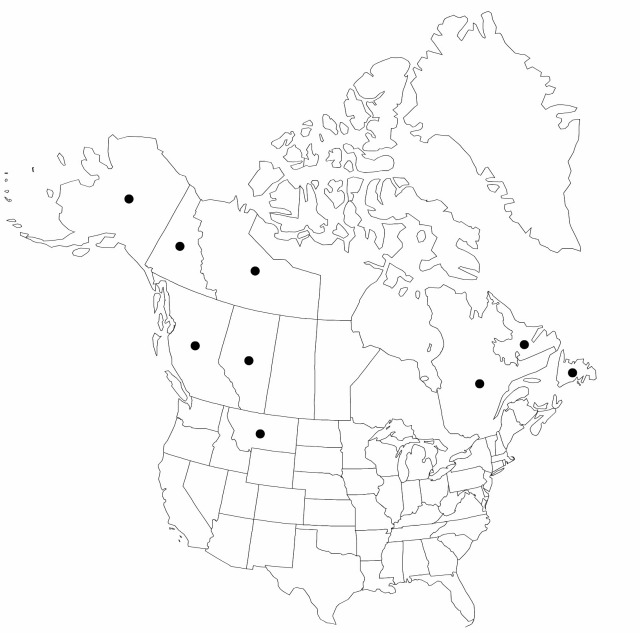Carex petricosa
Amer. J. Sci. Arts 29: 246, plate W, fig. 70. 1836.
Plants loosely cespitose; rhizomes slender, long. Culms 10–90 cm. Leaves: blades 1–3.5 mm wide. Inflorescences 3–12(–22) cm; proximal internodes 10–60(–100) mm; peduncles of proximal spikes to 8 cm; proximal bracts with blades 5–140 mm, sheaths cylindric, 5–25(–35) mm, mouth 0.9–1.5 mm wide. Spikes 3–8; lateral spikes androgynous or pistillate, rarely some entirely staminate, the proximal inclined or pendent, 5–30 × 3–7 mm; terminal spike staminate or androgynous, 10–28 × 1.8–4 mm. Pistillate scales brown to black, oblong-obovate, 3–5.8 × 1.1–2 mm, apex obtuse to acute, sometimes shortly awned. Staminate scales brown or black with hyaline margins, oblong-ovate, 3.1–6.2 × 1–3 mm. Anthers 1.5–3 mm. Perigynia ascending, pale yellow proximally, brown or black distally, 3–9-veined, lanceolate, 3.5–5.5 × 1.1–2.4 mm, margins ciliate-serrulate distally, apex tapered, shortly setose, sometimes setae confined to veins, or subglabrous; beak indistinct, to 0.5(–1) mm. Achenes obovoid, 1.7–2.2 × 1–1.3 mm.
Distribution

Alta., B.C., N.W.T., Que., Yukon, Alaska, Mont., e temperate Asia.
Discussion
Varieties 2 (2 in the flora).
Carex petricosa shows considerable variation, even within one clone, in the distribution of staminate and pistillate flowers in the inflorescence. The two taxa recognized can usually be distinguished by stigma number. A small number of individuals are to determine on purely morphologic grounds.
Selected References
None.
Key
| 1 | Stigmas 3; achenes trigonous in at least 1/2 of pistillate flowers and fruits. | Carex petricosa var. petricosa |
| 1 | Stigmas 2; achenes biconvex in at least 1/2 of pistillate flowers and fruits. | Carex petricosa var. misandroides |